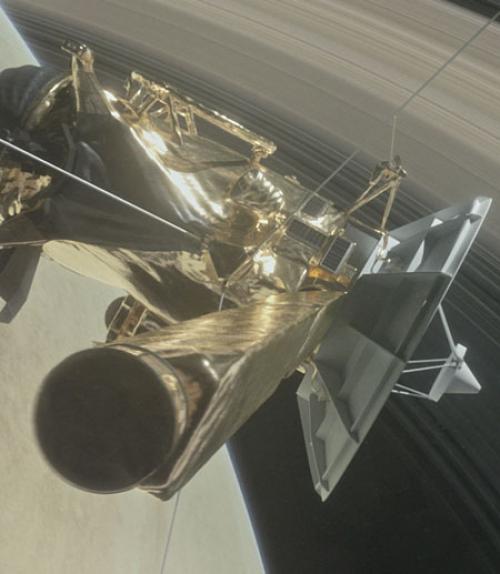Next week, the Cassini spacecraft’s historic exploration will end with a dramatic crash into Saturn’s atmosphere. To honor Cassini’s achievements and Cornell’s research role, the Department of Astronomy will hold a community farewell celebration Sept. 15 in 105 Space Sciences Building. The event will begin at 7:30 a.m.; NASA’s live feed of Cassini’s grand finale is estimated to begin just before 8 a.m.
During the event, Todd Ansty, a member of the Cassini imaging team at Cornell, will offer reminiscences about working on the spacecraft, answer questions about instrumentation and share some Cassini’s discoveries about Saturn’s rings. Cornell’s Spacecraft Planetary Imaging Facility (SPIF) will display images of Saturn and its moons on its “magic planet” globe, and SPIF manager Zoe Ponterio will answer Cassini questions.
“This has been literally a once-in-a-lifetime opportunity to contribute to an interplanetary exploration mission,” says Ansty. “Planning observations and learning about Saturn’s rings, Titan’s atmosphere, and the shapes and surface features of many of Saturn’s small icy moons has been an unforgettable experience.”
The Cassini-Huygens mission – a joint endeavor of NASA, the European Space Agency and the Italian Space Agency – was the first mission to orbit Saturn and explore its environs in detail. Its 13 years in orbit have seen countless spectacular discoveries such as the three-dimensional structures that tower above Saturn’s rings and icy jets shooting from its moons.
Perhaps most exciting of all, Cassini identified that two of Saturn’s moons, Enceladus and Titan, could potentially have environments hospitable to life. Cassini’s disposal in the atmosphere of Saturn is intended to safeguard the environment on those moons, preventing any contamination by an encounter with Cassini and its Earth bacteria.
As NASA noted on its website, “When Cassini ends, it will leave a rich scientific and engineering legacy” -- a legacy that Cornell and the Ithaca community will celebrate on Sept. 15.




